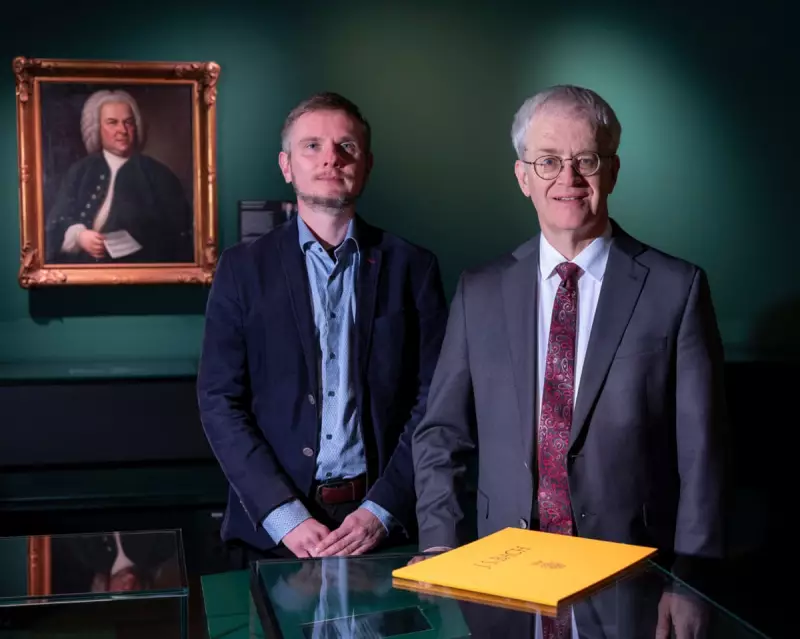
The Discovery That Took Half a Lifetime
In what can only be described as the musical detective story of the century, two previously unknown organ works by Johann Sebastian Bach have been authenticated after a remarkable 35-year investigation by dedicated musicologist Peter Wollny. The breakthrough represents one of the most significant Bach discoveries in living memory, shedding new light on the composer's early development.
The extraordinary journey began in 1992 when Wollny, then a Harvard University graduate student, encountered two intriguing sheets of music in the Royal Library of Belgium in Brussels. At just 30 years old, the young researcher couldn't have imagined that these anonymous scores would consume half his lifetime before revealing their true origins.
The Musical Detective Work
"I have to confess that I didn't even think these were works by Bach at the time," Wollny admitted recently, days after the two pieces – Chaconne in D minor BWV 1178 and Chaconne in G minor BWV 1179 – received their first performance in 300 years at Leipzig's St Thomas church.
What initially caught Wollny's attention wasn't the composition itself, but the handwriting. "The handwriting of the score just fascinated me," he recalled. "I had this vague feeling that these bits of paper could be interesting some day. So I made photocopies and created a file that I dragged around with me for 30 years."
The musical pieces presented several unusual characteristics that set them apart from typical compositions of the period. Both are chaconnes – a musical form originating from Spanish dance that evolved into a structured art form around 1700. Their defining feature is an ostinato, a short bass line repeated throughout the work.
What made these compositions extraordinary was their deviation from established norms. While most chaconnes from that era maintained consistent ostinato lengths of six, seven or eight bars, the Chaconne in D Minor featured a composer who boldly stretched the motif from seven bars to eight, then twelve, and finally sixteen bars.
Wollny described these unique touches as musical hapax legomena – elements that appear only once in a body of work. "These works didn't fit into the scheme of mainstream composition around the year 1703 at all," he noted.
The Handwriting Breakthrough
Wollny's particular talent for recognising handwriting features proved crucial to cracking the case. "I want to be careful how I put this," he said modestly. "But it could be the case that I have a talent for recognising handwriting features."
He felt an "inner duty" to identify the author, spending countless hours studying the unique characteristics of the musical notation. The investigation revealed that the documents weren't written by Bach himself, but by one of his copyists – students who transcribed the composer's works for dissemination or commercial purposes.
Over years of painstaking research, Wollny identified 20 more documents matching the same handwriting in archives across Leipzig, Berlin and Winterthur, Switzerland, covering the period from 1705 to 1715.
The crucial breakthrough came in 2012 when Wollny's colleague Bernd Koska discovered a 1727 job application letter from Salomon Günther John, who had studied organ under Bach in Arnstadt. The handwriting matched perfectly.
Koska noted Wollny's methodical approach: "Peter Wollny is someone who tends to weigh things up in his mind very thoroughly before he reaches a conclusion. That's the way he works."
The Final Confirmation
The last piece of the puzzle emerged unexpectedly in 2023 when a court document written by John in 1716, previously lost during the Second World War, resurfaced and provided absolute confirmation of the handwriting match.
Wollny's reaction to the breakthrough was characteristically understated. "I am not someone to punch the air in delight," he said. "I just sat there with a grin and contentedly turned the pages."
Now 65 and serving as director of Leipzig's Bach Archive, Wollny reflected on his 35-year quest with philosophical acceptance of changing times. "Perhaps artificial intelligence means that what I spent 35 years on will in the future be done in a couple of days or hours," he mused. "Maybe it will be easier and give us even more certainty. But that's OK."
The authentication of these works not only adds to Bach's known catalogue but provides valuable insight into his early compositional development, showing the bold experimentation that would characterise his later masterpieces.





